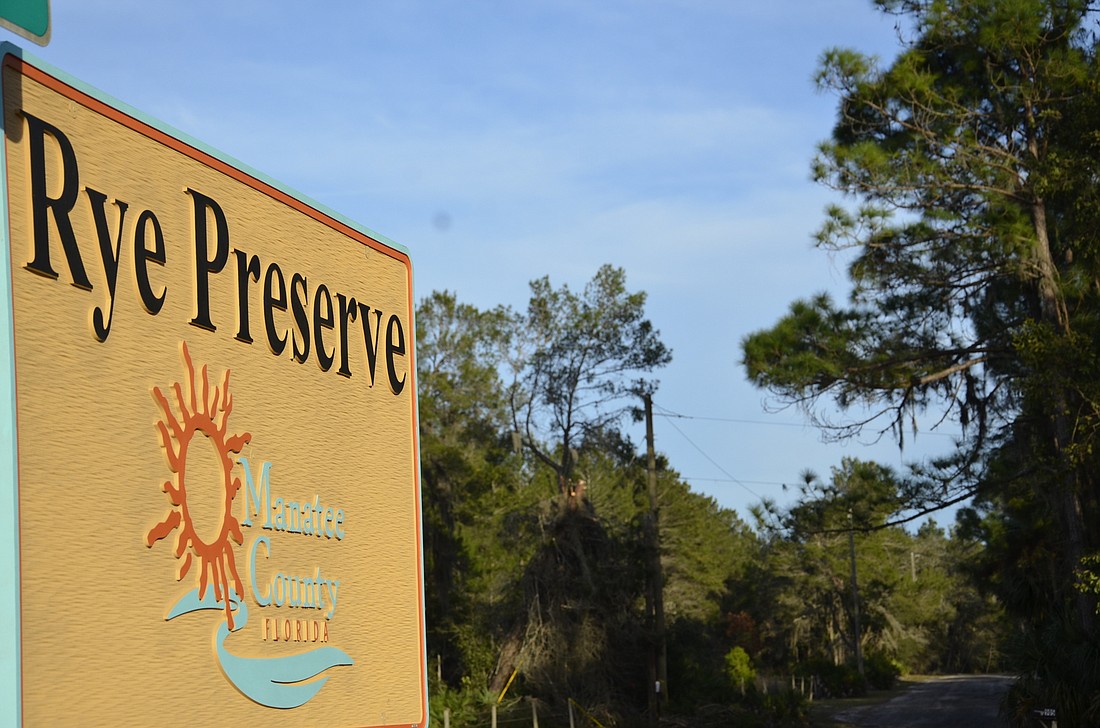- January 4, 2025
-
-
Loading

Loading

Sarasota County’s development surge has translated into an ecological gain for Manatee County.
After Sarasota County commissioners approved the rezone request for University Station Jan. 26, Manatee County was presented 40 acres of privately owned land inside Rye Preserve.
University Station, an 8.24-acre parcel at the southeast corner of University Parkway and Honore Avenue, will be home to Whole Foods, Wawa and Zoës Kitchen.
Developer SJ Collins Enterprises of Atlanta worked the land swap as mitigation because the center will develop 4.4 acres of wetlands at the Sarasota County site.
Due to the size and nature of the project, SJ Collins could not find any way to complete on-site mitigation. The developer, aware of Whole Foods’ eco-conscious business model, offered the alternative in Manatee County, a parcel it had purchased for $400,000.
Charlie Hunsicker, director of Manatee County’s parks and recreation department, said having the 40 acres under his county’s control has several benefits, including more land for the public with a parcel located in the center of Rye Preserve. Because the property was privately owned, the county could not access it to eradicate invasive species like Brazilian pepper trees. The invasive species were always growing into the preserve and causing additional efforts from county staff to maintain the native habitat.
The site, which includes forested wetlands, is located downstream from Lake Manatee. Since the 1980s, Manatee County has proactively purchased land downstream through which the “braided” portion of the Manatee River runs because it lessens the headache of releasing water from the lake with the risk of flooding a private property.
As part of the deal, SJ Collins will clean invasive plant species off the Manatee County property and turn the land over to Manatee County for maintenance.
An unusual deal
Off-site mitigation is allowed in the Sarasota County comprehensive plan, but locating the site out of the county is unusual, said Matt Osterhoudt, senior manager for the environmental protection division of the Sarasota County development services department.
Such mitigation is allowed if it provides a greater ecological benefit as a whole. The two counties and the developer must enter into an inter-local agreement that specifies who will take care of the land in perpetuity and how quickly restoration efforts must be achieved. By stipulation, the 40 acres can’t be developed.
The next step for SJ Collins will be to apply for a development permit, at which time Sarasota County will discuss the time frame in which the off-site mitigation must be completed. Osterhoudt said mitigation construction and restoration areas typically are required to be completed within 30 days of the wetland impact. This being an unusual situation, he said the time frame may be extended.
Jeff Garrison, of SJ Collins, said the site near Rye Preserve was chosen because it was a high-priority target. Located within the preserve, it’s been privately owned for decades and the county had never been able to persuade the owner to sell. However, being privately owned, it doesn’t get the same maintenance as the preserve.
“This 40-acre donut hole lets invasives have a safe haven,” he said. “Every year (Manatee County) has to go through and deal with these invasive species.”
Garrison said his team had to track down all the owners of the property — it had been divvied up over the years among the family—and get them to sign off on the deed.
“We’ve spent a lot of time on it,” he said.
Sarasota’s trade-off
Meanwhile, Sarasota County has even more shopping choices along the University Parkway corridor while losing a wetlands area that might have been in danger anyway with all the construction around it.
After the Sarasota County supervisors meeting, Osterhoudt said the wetland was in an odd location now, after everything around it had been developed, but that it was still a healthy, functioning system.
“It did have those factors working against its long-term success,” he said.
The 40-acre wetland isn’t one of the more populous, herbaceous kind. It is a forested maple swamp, which Osterhoudt said is more rare and unique in an urban area than other swamp subsets.
Sarasota County staff had surveyed the wetland and found signs of a healthy, self-sustaining system. It still had maple trees and the right kind of undergrowth with no diseases or negative growths present except some Brazilian peppers on the border. It was still exhibiting the proper soil moisture levels. It was still contributing, as it had done historically, to the Cooper Creek drainage basin which flows into the Braden River Water Shed. About 14% of the Braden River watershed resides in Sarasota County with the rest in Manatee County.
Garrison said the wetland was too isolated to provide quality habitat for native wildlife, which had to cross the roadways to enter and exit the area. Those thoughts were backed by Dana West, vice president of Environmental Consulting and Technology.
While the wetland, in its current state, still provided ecological value, West said it was limited.
Environmental concerns aside, residents of the area were overwhelmingly in support of the University Station project. The county received dozens of letters recommending approval.